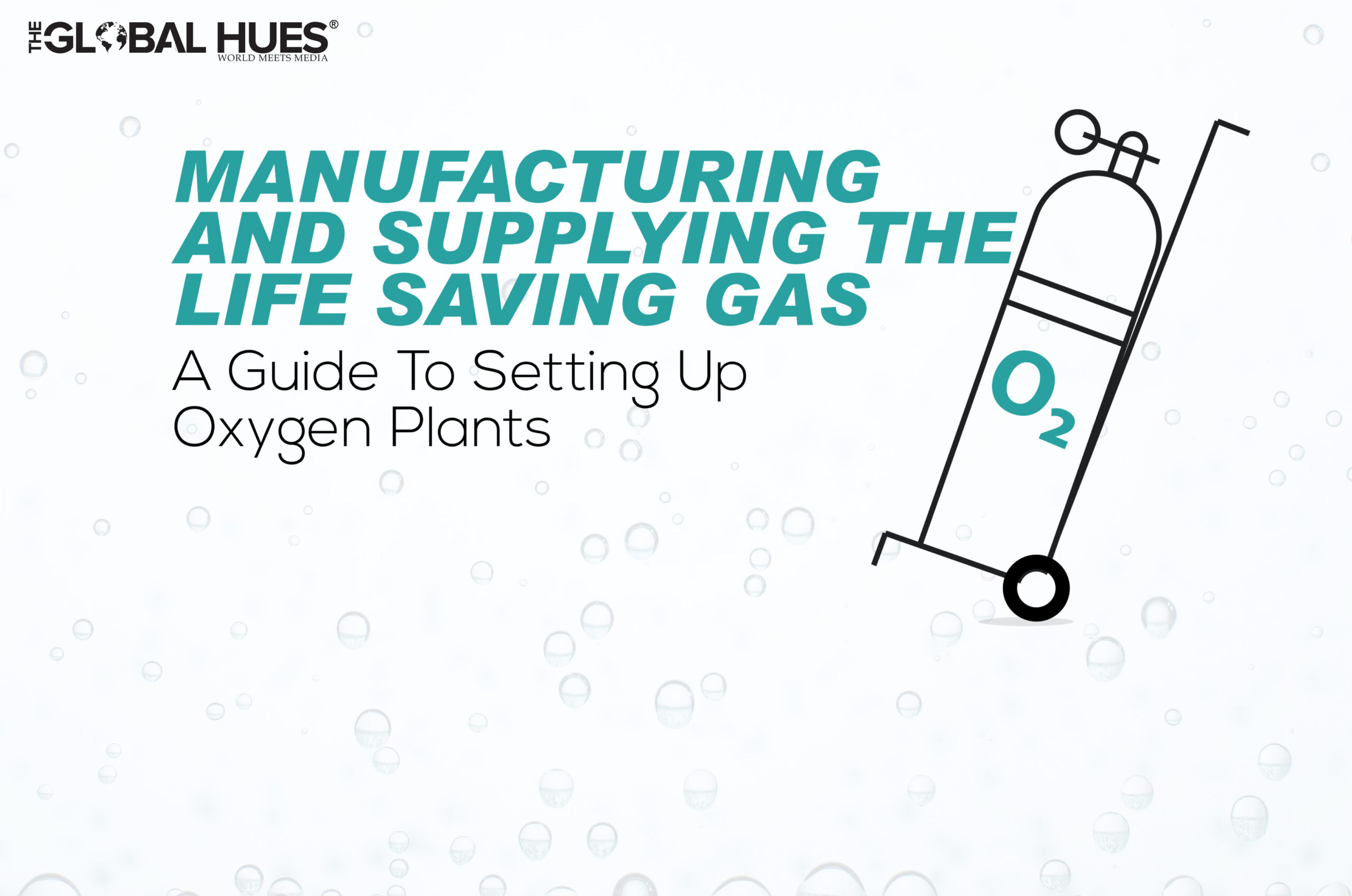The covid-19 pandemic in India has created a deadly situation for all the citizens and by this time, all of us have realized that the most essential element that we took for granted, oxygen, has now become a privilege. Amidst all this, we also notice a growing opportunity, which is setting up oxygen plants. But it is not as easy as it sounds. Below is all that you need to know about setting up oxygen plants.
Keeping in mind the high demand for oxygen in the country, steel plant requires gaseous oxygen, primarily for steel making and for oxygen enrichment in Blast Furnaces, apart from some general purposes like lancing and gas cutting. Hence, Captive Oxygen Plants in Integrated Steel Plants are created to produce primarily gaseous products of Oxygen, Nitrogen, and Argon and then routed through Pressure Reduction & Management System (PRMS) to meet the process need at the desired pressure. Such plants can produce 5-6% maximum Liquid Oxygen (LOX) at the peak capacity, which is a highly concentrated pure product if compared to industrial oxygen. Plants can only optimize LOX production by sacrificing some gaseous Oxygen and optimize process parameters.
The ministry of steel made a statement regarding the situation, “Steel plants in both public and Private sector are striving hard to supply the liquid oxygen to different states. The Average delivery of Liquid Medical Oxygen by SAIL (Steel Authority of India Limited) has been raised to more than 800 tonnes per day. SAIL has been continuously enhancing LMO (Liquid Medical Oxygen) supply.”
ALL YOU NEED TO KNOW ABOUT OXYGEN MANUFACTURING IN INDIA
The country is submerged under an unprecedented crisis with several hospitals struggling to get a continuous supply of oxygen. The manufacturing and supply of this life-saving gas, which was always a surplus commodity in India, has suddenly become scarce and a top priority for the government.
There are different types of oxygen sources available. Medical oxygen is a high purity nutrient, while industrial oxygen is used in factories for combustion, oxidation, cutting, and chemical reactions. The purity levels of industrial oxygen are inappropriate for human use. However, post the outbreak of COVID-19; industrial oxygen has also been diverted for medical purposes in India after clearing the impurities. The huge cylinders that you might have seen being used for home treatments contained the purified version of the industrial gas. There are mainly three types of oxygen sources in India at present. These are the air separation units (ASU) which are commonly used for commercial purposes, pressure swing adsorption (PSAs) for producing on a medium scale, and oxygen concentrator, which is used to manufacture oxygen at homes and small rooms.
Read about: ALL YOU NEED To KNOW ABOUT OXYGEN EQUIPMENTS
HOW MUCH DO YOU NEED TO INVEST TO SET UP AN OXYGEN PLANT?
Since the demand for oxygen has been so high recently, everyone would want to set up an oxygen plant but it is important to first be informed about the investment it requires. ASUs are used to produce oxygen on a very large scale. PSA (Pressure Swing Adsorption) oxygen plants have an initial set-up cost, that depends on the capacity of the plant. But that is more than offset by the savings in monthly oxygen bills, say hospital owners who have opted for these plants. A plant that has the capacity to supply 24 cylinders worth of gas per day costs about Rs 33 lakh to set up and can be furnished and completed in a couple of weeks. A 240-bed hospital would require around 550 LPM of oxygen. A hospital of that size, including 40 ICU beds, ordinarily uses oxygen worth about Rs 5 lakh per month.
BENEFITS OF A PSA PLANT
There are two clear advantages of the technology — firstly, the hospital gets a captive plant that can generate all the oxygen it needs, doing away with the need for cylinders, etc. As the home ministry has also stated that India’s problem is not oxygen generation but the main problem faced by the country is oxygen transportation.
Handling cylinders also has a safety aspect to it as oxygen under high pressure can be highly inflammable and dangerous. Several fires in Covid-19 hospitals across the country have been grim reminders of those risks. The oxygen plant can also give it some buffer during times of augmented demand. It is not an expensive technology.
This buffer works as an advantage for hospitals and also the fact that PSA is ‘clean technology’. The raw material that it utilizes is the ambient air. Another plus point is that it takes very limited space.
HOSPITALS RUNNING OUT OF OXYGEN
The primary problem is that medical oxygen is not reaching hospital beds in time. This delay is a product of where production units are located and a lack of proper organization and planning, a stretched distribution network, and what critics have said is bad planning.
More than half the hospitals in Delhi, which have no significant oxygen production capacity have made frantic public calls during the second wave seeking emergency supplies.
With COVID-19 cases also taking over its neighboring states like Haryana and Uttar Pradesh, oxygen facilities there are over-stretched attempting to meet local demand.
The federal government has utilized the Indian railways’ facility to move multiple tankers from refilling plants to where it is most needed.
In conclusion, the situation in India has led to many people investing in setting up oxygen plants due to the hiked demand, however, it is prominent to first be well informed about how oxygen manufacturing works, and the investment and various other aspects need to be kept in mind.




